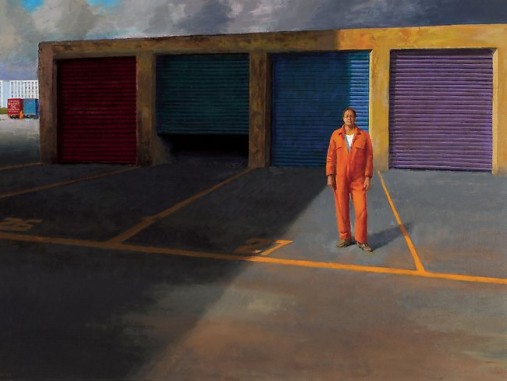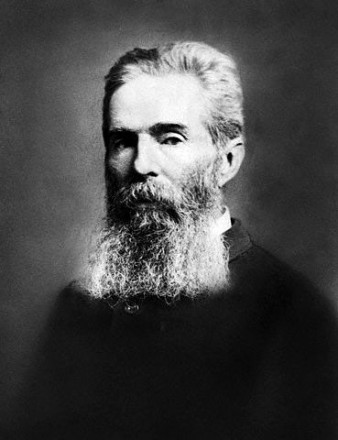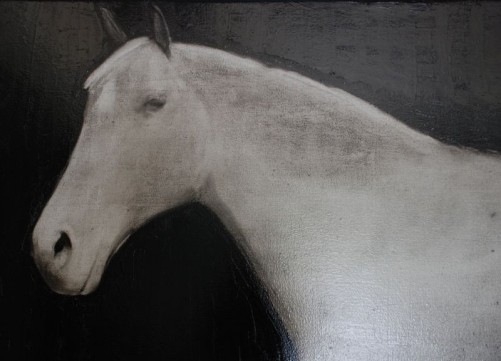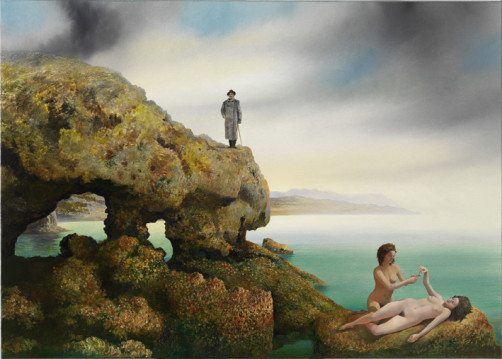
Agostino Bonalumi
“We live in an age in which violence and the logic of disposability mutually reinforce each other. For example, unarmed and with his hands raised, Michael Brown was not only shot by a white policeman, but his body was also left in the street for four hours, a reminder of the same treatment given to the low income inhabitants of Katrina whose bodies, rendered worthless and underserving of compassion, were also left in the streets after the hurricane swept through New Orleans. The disposable are the new living dead, invisible, and relegated to zones of terminal exclusion and impoverishment. The disposable are the unknowable, invisible, and powerless marginalized by class and race and forced into ghettoes that serve as dumping grounds for the poor, inhabited by armies of police dressed like soldiers inhabiting a war zone or what Joao Biehl calls “zones of social abandonment.”
Henry Giroux
“The sociology of culture is inseparable also from criticism (aesthetics) because the social origin, content and function of a work of art can only be fully understood by examining the internal formation of a work, that is, the way its meaning is structured. Thus sociological examination of the text and content of a work of art cannot limit itself to questions of fact and absolve itself from questions of evaluation.”
Gillian Rose
The Melancholy Science, An Introduction to the Thought of Theodor Adorno.
“…Four essential features of schizophrenic personality. First is a preponderance of destructive impulses so great that even the impulses to love are suffused by them and turned to sadism. Second is a hatred of reality which, as Freud pointed out, is extended to all aspects of the psyche that make for awareness of it. I add hatred of internal reality and all that makes for awareness of it. Third, derived from these two, is an unremitting dread of imminent annihilation.”
W.R. Bion
I was thinking of a remark made on social media about the U.S. penchant for looking to brand themselves in particularly fantastical ways. And that this somehow rather seamlessly fits into the white paternalism one sees in Western media when they address the poor, whether in Ferguson, or Gaza, or Iraq, or Appalachia. The poor are the white man’s burden (even when white), unless of course, they are just so flawed they must be exterminated. But this idea of self branding is linked to the western notion of identity. And that is linked to this perspective the affluent class has on the poor. The culture industry promotes ideas of rugged individualism, especially in the U.S. So, suburban families buy SUVs with off road tires and high intensity fog lamps, and special industrial kitchen stoves, or extreme diving watches. All of these consumer fetishes. That SUV is likely never going to go off road. People of course tell themselves it’s for safety. And fair enough I suppose. But that’s not the point. The point is the almost surreal level of identification people express with their commodities. Its the process of reification, achieved now over decades and decades.
This raises issues of style and aesthetics. For embedded in this debate is the feeling that the poor don’t deserve the luxury of aesthetic choices. Oh those black teenagers spending two hundred dollars for new Nike trainers. The fault is with Nike, not with those poor teenagers. If you are poor, and I can testify to this, as you grow up, developing aesthetics, developing taste, and a sense of personal style is also a liberating avenue for countering the oppression you experience daily. And no, its not illusory. Nobody complains if Bill Gates buys a thirty thousand dollar Audimars Piguet watch. But if a young basketball player buys that watch, he is seen as immature and irresponsible. The underlcass has always been the font of creativity.

Plague dolls, circa 1895. Hong Kong Museum of Medical Science.
All that said, the idea of personal branding is pronounced. And it exists not just in commodity purchases, but in behavior and the construction of values and morality. The compulsive consumerism in the lives of the poor is a reality, and increasingly it is shaped by marketing campaigns directed at people that logically can’t afford the product. But that is because part of the marketing is seeking validation from the poor. ‘Street cred’ and all manner of appropriation of underclass style occupies ever larger chunks of brand research.
The focus on rugged individualism, self made men (sic) at the same time erodes narratives of solidarity and cooperation. Hollywood has never developed narratives of cooperation unless during war, and even then its a secondary theme. But this begs other questions about narrative, and the legacies of 18th and 19th century novels. For this was the formation of the bourgeois identity. I often think too much is made of this because there are other factors at work and because its a highly complex question, but certainly the trope of individuality was foregrounded by the mid 18th century.

Jeffrey Smart
The idea of the narrator’s voice, links to reification and to how that voice is shaped by branding and consumerism, and then thirdly, is linked to theory, to thought. To philosophy. All these words are now so abused that it is actually difficult, increasingly, to use any of them. The absolutely pernicious influence of academic practice in theory and criticism and philosophy is systemic, and far reaching.
I will return to that in a moment, but the other issue I wanted to touch on here, for it is related as well, is the disappearance of storytelling. Having watched this week almost a dozen “indie” films from the last two years, one thing leaps out as a common denominator…and that is an absence of writing. Some of these films had ideas, in a generalized sort of way, some were visually intelligent, but in none of them, including the single one I thought had value, was there any actual writing. Nobody spoke much, and when they did, they said very little. And it wasn’t the manner of saying little, of expressing ideas through inarticulate characters, it was simply, I think, the inability to write. And this inability, as often happens, becomes a sort of faux virtue under cover of ‘style’. When playwrights such as Franz Xavier Kroetz write characters who say little, who are profoundly inarticulate, he is ‘saying’ a good deal through a very sophisticated theatrical vision. When independent (sic) directors remove dialogue, there is a pretense to the Chiat Day style code, to that arch loss of affect that serves as both comedy and mock tragedy, and making empty seem like existential profundity. There is empty and there is empty, and these were “empty”. Allow me a brief digression here; this blunted affect or diminished affect is usually associated with either schizophrenia, Aspergers, or anti social personality disorder. All are linked to issues of empathy. I just find it intriguing that a symptom for the loss of ability to both read and express empathy has now been absorbed into performance and narrative to such a degree. An interesting side bar to this is a paper edited by Iqbal Ahmed, M.D. of the A.P.A., who said that Mexican American, and middle eastern minorities in the U.S. diagnosed with schizophrenia showed far less blunt affect or flat affect than white Americans. In cultural expressions the result of the ‘new empty’ is that the actual narrative, the storyline in almost all of these films, suffers, becomes generalized, homogenized. The best, Kelly Richardt’s Night Moves (not to be confused with the great Arthur Penn film) at least captures a sense of the suffocating isolation of a generation on the margins who cannot find words to express their anger.

Night Moves, 2014. Kelly Reichardt dr.
This is not exactly elliptical, but rather a kind of paratactic storytelling, for in the Reichardt film, the order of events is clear enough, but in each location, there is no explanation, only a kind of isolated moment that serves as one of the constellations around which this one event, the one event of impact, occurs. And in that sense it is very effective film-making. Still, by the end, Jesse Eisenberg’s performance becomes a bit closer to “empty”, than enigmatic. It is a film, nonetheless, that is haunting in many ways, and like many films shot in the Pacific Northwest, it takes advantages of the wet greens, browns, and lack of sun. This is a world of damp rot, emotional and physical. It ranks as among the best films of the year, probably.
I think the crucial thing in all this, and that links it all together, is to try to start seeing and reading cultural works in how they relate to, are created by, and how they reveal the society around us, that we live in.

Giuseppe Penone
There is a general failure today in most cultural writing to recognize the way authority and domination is expressed in the form of artworks.
“The unsolved antagonisms of reality reoccur in the work of art as the immanent problem of its form.”
Adorno
A crass example might be Avatar, which even if one put aside the neo-colonial content, expresses a certain authoritarian aspect by virtue of the grandiosity and excess of its technique, its ambition, and its cost, not to mention its hegemonic distribution. The validation of global power is built into every aspect including the gimmick of 3D. The gratuitous exaggeration of production cost, and the bloated self importance of the mise en scene is self validating. Now there has arisen, I think, a new set of rituals that define the social use of art. And it is not hard to see the class antagonisms of much cultural product today. What is significant, I think, when discussing art (per Benjamin) in the age of technological reproduction (which in many ways today means film and TV) is not just in the inherent realism of film, but the way in which narrative is rarely mentioned. Adorno’s debates with Benjamin continue to define much of the discussion of culture today, and I think it is worth looking at this in terms of reification. For Adorno saw the commodity character of artworks not from the position of the relations of production, but from the position of the ‘forces of production’; which meant that the entirety of human sociality was defined by the totality of an abstract labor time, then not just the artwork has been turned into a commodity, but people as well. The dominant mode of production affects all commodities, not just artworks. In some sense, inequality and privilege are built into all art today. The rituals, or social uses in a sense, are connected to the ways in which artworks serve as accessorizing for those shopping for product. The viewer and film both validate each other. Popularity earns more popularity, and dissemination and circulation of image is part of this new attention economy. The difficulty is that as narrative erodes the image loses meaning.

Tomasso Masaccio, Chapel Brancassi, 1420s.
The vast majority of indi film coming out of the U.S. is utterly emptied of meaning. The films serve to confirm certain visual cues that are read as meaningful in the most rudimentary ways, as generalized and self evident beliefs. They have only basic relational meaning, if that. The vagueness is celebrated as hipster existentialism. They operate almost entirely free from historical meaning. The relational meaning functions as universalizing. It substantiates the subject position of the filmmaker. Usually white, affluent, and capitalist. The flip side of this same coin is the infantilizing of what little narrative there is. This is the JR Tolkin aspect, the Hobbitization of storytelling. The real message of Tolkin films, and Harry Potter is both nostalgia for Empire, but also to manage all the little children in the world (the masses).
The question of reification and of subjectivity as they pertain to narrative is important here. Adorno’s essay on Kafka is a good example of his belief that “subjectivity is the correlate of reification”. Kafka’s subjectivity serves to, per Adorno, reify itself. The subject becomes an object. But this can only happen through mechanisms of style. This is the art of writing. Kafka constantly subverts the expectations of progression. Progress is turned in on itself. The trend toward imbuing blankness with existential meaning is probably one of the unfavourable legacies of Beckett’s influence. But it is in just such comparisons that aesthetic resistance must reside. For Adorno, as real events seem ever less meaningful the artists intention then becomes more illusory and of less importance. It is only through an elevated style that narrative can sustain meaning. In Kafka, the fantastical magical thinking and narcissism of the petit bourgeois is revealed, and the novels serve as interrogations of a manufactured ‘reality’. Which leads one back, again, to film today.

Ron Gorchov

Hamish Fulton, photography.

Herman Melville
“All the films I find worthwhile end up with a scenario, just as Malraux said, Death transforms life into destiny. Every bad film begins with a scenario and ends with a copy of the scenario.”
Jean Luc Godard

Athens, Kolonaki, (financial district), 2013. Adam Lach photography.
In Melville’s personal copy of Cervantes, he wrote only a single note in the margins, on a page in which Don Quixote says a knight errant without a woman is like a tree without leaves. Melville wrote “A god like mind without a god.” Melville never forgets the horizon, or the bottom of the vast Pacific. The traces of crime, of transgression, rather than the reflexive cruelty of disposible lives in kitsch films and TV. So the discourse must resume with questions of education. The new culture of snark is deeply embedded not just in media, but in Academia as well. Henry Giroux recently pointed out the snide superior tone of most book reviewers, and in peer reviewed journals. This snideness appears, of course, in almost all reviewing. The bottomless stupidity of Emily Nussbaum at the New Yorker, or any of the Huff Post critics, and all the rest, are basically predicating their analysis (sic) on sarcasm and attitude. The effect of this, or one of the effects, has been to diminish genuine humour. Less and less is actually funny. Laughter is more and more hysterical, and smiles more frozen. The face of brutality looms in both Obama and Netanyahu. The obsequious cruel servant in the face of Cameron, and the sneering overseer of the plantation in Rahm Emanuel. There is no breadth of feeling in these faces. Only, like in the countenance of Donald Trump or Bill Gates, a kind of petulant narcissism. But a narcissism without much confidence, for in their eyes is the stye of panic, of fear. They are coming, the people are coming, and they want to take away what I stole from them.
The essence of sacrifice is substitution. The mimetic is both substitution and sacrifice, as well as projection. The horror of our age is that it seems as these complex social mechanisms disappear, there is corresponding violence erupting.
“No man has ever felt another man’s hand undoing the invisible bridle that is around his neck. Nobody has ever been totally freed from being used by other men.”
Roberto Calasso

Joe Andoe
Exchange value. The endless cycles of profit. Of taking more than the other guy. But once more is taken, it is immediately not enough. The joke in Poland when I lived there was, if your neighbour gets a new car, you dont pray to God for a new car yourself, you pray to god that someone steals your neighbour’s fucking car. It was Benjamin, in his book on German Tragic Drama, who referenced ‘the dreamer who dreams he is waking up’. The history of Western metaphysics was forgetting (one thing both Adorno and Heidegger agreed on), that a compulsive forgetting was the only thing that allowed the nightmare to continue. The sacrifice of a goat means you get an eternal ‘one’ goat. That was the idea. When compulsive forgetting overtakes myth and all ritual, you get only the Panopticon, the NSA, and the dead letter box. Under an electron microscope, with light microscopy, one can get images of ultrastructures, the nano structure of a biological item. Yet the world still ‘sees’ less and less. Hears less and less. And my sense is that the deepest infection of all is the one of improvement. Of development. This is the realm of constructive criticism, self help, self betterment. One cannot imagine the idea of improvement unless one first hates oneself. And/or is hated. One leads to the other. Substitution. Repetition. The lie of NGOs, and charities, of all grants and awards. The lie is that first, the unsaid truth, is that you are in need. You are in NEED of charity. Of help, you NEED help. YOU cant do it yourself. THEY cant do it themselves. THEY NEED ME, US. There is something profoundly unsettling in the cruelty of Israeli bombardment of Gaza this last two weeks. Wanton, genocidal, and in that face of terror resides the flip side of improvement. The one that has decided, I DONT NEED any help. I am BEST. I am CHOSEN. Real improvement comes out of sacrificial sharing. Improvement is the wrong word, the correct word is cooperation. That’s all. Cooperation. Of course, we are made in rivalry, in separation, and that’s where I cant quite get on board with a lot of my Marxist friends. The infant is both innocent and perfect, and already terminally fucked up. Its both.

Daniel Ludwig
Adorno wrote:
“Between ‘there came to me in a dream {es traumte mir} and ‘I dreamt’ lie the ages of the world. But which is more true? No more than it is spirits who send the dream, is it the ego that dreams?”
The tenor or tone of the bourgeoisie today is somewhere between Downton Abbey and Breaking Bad. This is the snotty snarky white people who long for Victorian class clarity, and also find validation in their paternalism toward minorities. Ah the pleasures of knowing your servants adore their job. The lower working class, the temp worker class, resides within a mixture of Captain America and Ice Road Truckers. There is privilege embedded in all of this. Or a desire for it. And to return to the top, and reification, there is such a strong instrumental logic at work that one ceases noticing it. Everything is a problem, and everything needs a solution. Rugged individualists solve problems. If that means crushing those beneath those big after-market all weather all terrain tires, then so be it. Lacan believed every answer by the ‘other’ was unsatisfactory. Freud suggested children are forever unsatisfied. I wanted to end with a quote from Paul Verhaeghe, who wrote a quite good book on Lacan and Freud and the Oedipus complex.
“On Freud’s classic theory it is the father who forbids the child to enjoy the mother. In Lacan’s first interpretation, it is the mother who is forbidden to enjoy her child. In his last theory he indicates how this prohibition is the product of social construction; in fact it is only a camouflaged replacement of something far more fundamental, namely the impossibility of jouissance in itself. Within infant research and attachment theory, the focus is on the regulating character of the mirroring, the idea of prohibition being implicitly present in the very idea of regulation.”

Genia Chef. ‘Odysseus and Calypso’.
This is the paradox of lost prohibition. Increase in anxiety. It would be interesting to revisit some of Reich in light of this, but I think there is a depth to the truth here. I remember David Foster Wallace’s short essay when he said he felt his generation were waiting for their parents to come home so they could force the kids to stop the party. These are idle day dreams of privilege, finally. Frat boys. Still, anxiety creeps through everything and everyone.

From a review of Alfred Schnittke’s (a composer I feel deeply ambivalent about, yet is stunning at his greatest) film score by Seth Brodsky:
“[…] Disillusionment, the process of cracking the world of appearances and revealing the tragic depths. […] Romanticism is synonymous with an alienation between appearances and actualities, in which promising surfaces might at any time fall away to reveal terrible depths.”
The problem is that, in our society — at least in the hyper-commodified neoliberal societies, (which are spreading like malignant tumours and fast leaving no part of the world untouched) — we no longer are truly “disillusioned.” Lack of faith is now considered a moral failing. It’s like what you said about the positivity culture. “Cracking the world of appearances” is no longer a cultural option, and it is being relentlessly reinforced by the commercial arbiters of taste, because only surfaces can be commodified; depths cannot.
Schnittke’s music: https://www.youtube.com/watch?v=M3Xehs1rHfM
Concerto for Chorus by Alfred Schnittke
Conductor: Valeri Polyanskii
Orchestra/Ensemble: Russian State Symphony Cappella
Period: 20th Century
Written: 1984-1985; USSR
Date of Recording: 1991
Venue: St. Sophia Cathedral, Moscow, Russia
http://www.youtube.com/watch?v=EKXr5lqrE_U
Thank you, lovely. Another great one.
John Tavener: https://www.youtube.com/watch?v=5PQF3PjxS2c
Music that creates a “space” — how many composers nowadays can do this anymore? Most of contemporary “art music” [sic] has become 2D. Like a screen projection. How does sound relate to space — nobody knows anymore.
More Tavener: https://www.youtube.com/watch?v=a9PAlIjl_pM
There was an interview he says where he finds much of modern art, whether music or visual, to be “aggressive”, “sharp-edged”, and I find that to be exactly right. What he does here, which is create a space, a void, rather than a positive object, with his music. And there is a wonderful softness to it that our age is sorely missing in.